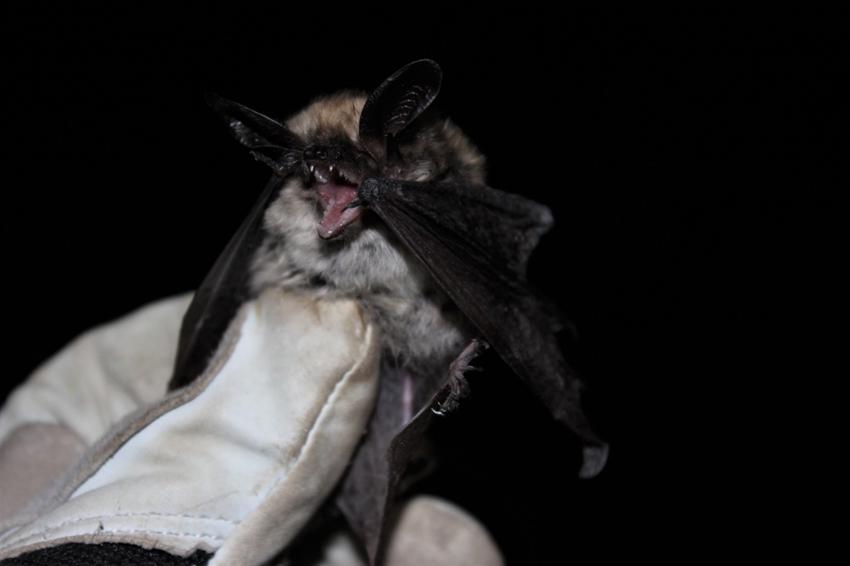Minerva Ángela Uribe Rivera
Other projects
22 Nov 2017
First Acoustic Monitoring System for Bats in Natural Protected Areas of Baja California, Mexico
The main aim of this project is to propound the first guideline for bat conservation at wind projects for Baja California and Mexico.

Bat captured in San Pedro Martir, Baja California
Baja California State is one of the areas with more potential for wind energy generation in Mexico. The first wind farm was installed in 2009 at Sierra de Juarez, one of the northernmost elevated peaks of Baja California and two other wind projects are planned with a total installed capacity of more than 200 MW (megawatts). Sierra de Juarez is located within the California Floristic Province, which is worldwide recognized for its biodiversity and high level of endemisms. This area is also considered a priority terrestrial region by The National Commission for the Knowledge and Use of Biodiversity. In the case of bats, there is concern about potential effects of wind projects because Baja California has been highlighted as one of the areas of particular importance for this mammals.
Additionally, in Mexico there is no specific guidelines for the impact assessment and application of mitigation measures for conserving bats. Consequently the main purpose of this work is to propound the first guideline applicable for bat conservation at wind projects in Mexico. The objective of the final document is to guarantee that technicians or biologist make complete studies previous to the construction of wind farms, taking into account the effects on bats.
Field work will be developed at La Rumorosa wind farm, which is located at the north of Sierra de Juarez, Baja California, Mexico with extreme coordinates 32º29’56” N, 116 º05’24” W. Here we will identify bat species, and information about its diversity, abundancy, distribution, use of habitat and vulnerable species present at Sierra de Juarez that can be used as baseline information in future impact assessment of wind projects and in other studies to compare species abundancy before and after wind farm operation at the study area.
Moreover, by collecting bat carcasses at the Wind Farm, we will be able to identify which species are more susceptible to die at wind farms in Baja California and make the first estimation of fatality rate of bats at the state, which will contribute to make a more accurate estimation of the impact of future projects and propound mitigation measures for actual and future projects.
Finally, international guidelines will be compared with national ones and according to the results of the species information collected at field, and bibliographic information of vulnerable species, guidelines for evaluating and mitigating negative impacts of wind farms before and after operation are going to be proposed.